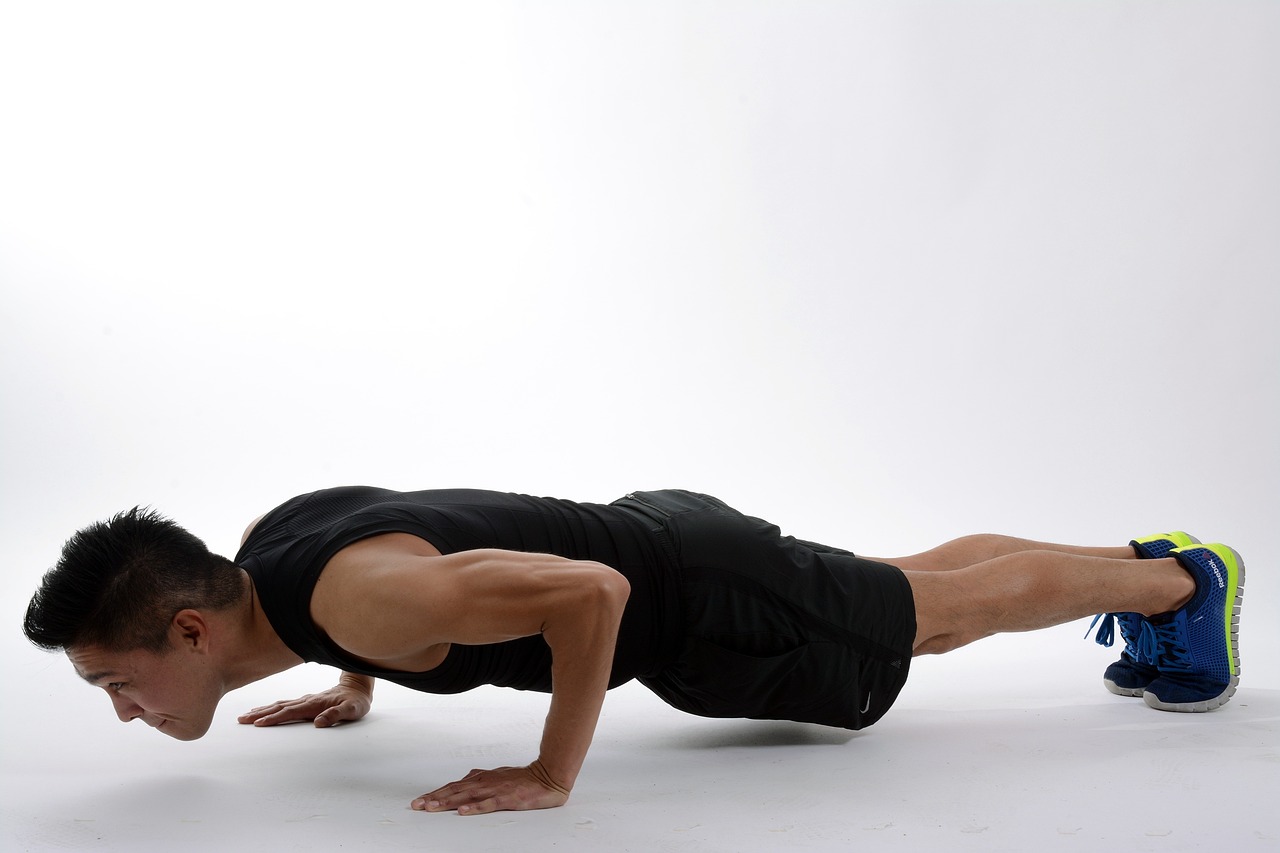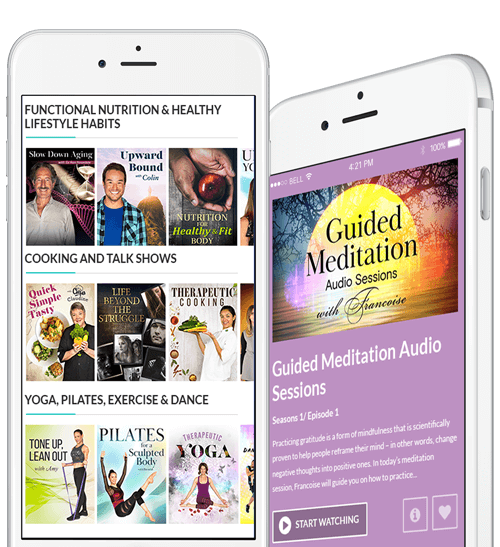10 Best Resistance Training Exercises to Combat Aging
Home
 Blog
Blog
 Wellness
Wellness
 Healthy Aging
Healthy Aging
 10 Best Resistance Training Exercises to Combat Aging
10 Best Resistance Training Exercises to Combat Aging

Nothing can beat the effects of resistance training for combatting aging!
Think about it: resistance training strengthens your muscles and bones, staving off the muscle wasting and bone weakening that’s so common with aging. It also encourages a fuller range of motion and maintains good mobility in your joints. Finally, it keeps your heart beating at full capacity, burns fat, and pushes your cardiovascular system to its limits.
Put all that together, and you’ve got a simple yet highly effective method of slowing biological aging significantly.
Below, we’ve compiled a list of the resistance training exercises we believe will best combat aging and help you keep your body spry, strong, and mobile. Integrate these ten exercises into your training regimen starting today to age gracefully and stay active for as long as you possibly can!
10 Best Resistance Training Exercises to Combat Aging
1) Push-Ups
Let’s be honest: push-ups are one of the most commonly used metrics to test your fitness. And with good reason! It’s one of the simplest exercises that uses only your bodyweight to test your muscular strength and/or endurance.
Push-ups engage all of your push muscles, including your chest, shoulders, and triceps. Your core has to engage to maintain stability and proper form when lowering and raising, and there’s even engagement of your hip and leg muscles.
One of the best things about push-ups, though, is that it will contribute to stronger wrists. All of your upper body weight rests on your wrists for the duration of the exercise, so the muscles supporting the joint have to grow stronger through the training. In addition to making your push muscles stronger, it can also combat wrist issues (which are so common among aging white collar workers who spend long hours typing).

To perform this exercise:
-
Place your hands on the floor directly beneath your shoulders and extend your legs.
-
Bend your arms at the elbows to lower yourself toward the floor. Make sure to keep your elbows tucked into your sides as you lower.
-
Pause just before your chest touches the floor, hold for a 1-count, then push back up until your arms are at full extension.
-
Pause at full extension for a 1-count before lowering again.
-
Inhale as you lower, exhale as you push up.
2) Barbell Bent Over Rows
Barbell bent over rows may not be the best upper back exercise (that honor falls to pull-ups), but they’re one of the best for working your entire posterior chain—aka, the muscles that run along the back of your body.
You see, when you perform the bent over rows, your lower back, glute, and hamstring muscles have to engage to support your upper body in the bent over position. Even your calves and feet muscles get in on the action when you bend your knees. All of that, together with the work your upper back muscles are doing, combine to strengthen your posterior chain muscles significantly.
Yes, there are more dangers to doing this exercise than, say, pull-ups, so it’s incredibly important that you get the form right and perform the movement safely. But if you can master the form, it will do more to strengthen your posterior chain than many other upper back exercises.

To perform this exercise:
-
Stand with your feet spread slightly wider than shoulder width apart and a loaded barbell on the floor in front of you.
-
Hinge at the waist to bend forward and pick the barbell off the floor (grip roughly shoulder width). Keep your knees slightly bent.
-
Lift the weight just off the floor, but stay in the bent over position.
-
Pull (row) the weight up to your solar plexus, then slowly lower it back down to starting position.
-
Exhale as you pull, inhale as you lower.
3) Kettlebell Squats
Kettlebell squats are an excellent exercise to work out a lot of different muscles at once.
As the name suggests, it’s focused chiefly on the squat movement, which targets your legs. Your quads (in the front of your legs) will do the majority of the work lowering and raising your body. Your glutes and hamstrings have to engage to support the quads, though, especially when adding in the weight element (which creates a bit of instability your posterior chain muscles have to counteract).
But the exercise doesn’t just stop at your legs. Because you’re gripping the kettlebell and holding it close to your chest, every muscle from your forearms to your shoulders, chest, and back get involved in the movement. Your abs and lower back also engage to maintain your stability through the full range of squatting motion.

All in all, it’s a nearly full-body exercise that will do wonders to fortify your entire skeletomuscular structure.
To perform this exercise:
-
Start with your feet planted in a comfortable squat position (usually about shoulder width apart) and a kettlebell resting on the floor between your feet.
-
Bend your knees into a squat, hinge at your hips, and reach down to pick up the weight.
-
Swing the kettlebell slightly back, then forcefully forward to bring it up to chest height.
-
As the weight swings up, stand up from your squat.
-
As the weight swings back down, lower once more into the squat.
-
Let the kettlebell’s momentum swing it between your legs, then pull to swing forward once more.
-
Exhale on the up-swing, inhale on the down-swing.
4) Burpees
Oh, the dreaded burpees!
Let’s be clear: burpees are NO FUN AT ALL, but they are amazing for strengthening virtually every muscle in your body.
Your push muscles (chest, triceps, and shoulders) engage during the push-up portion. Your core (back and abs) engage during the jump back and jump forward portion. Your legs engage during the squat and jump portion. And, through the entire exercise, you’re training your muscles to engage through a variety of positions and movements.
Burpees are an excellent exercise for increasing your mobility. They can also strengthen every joint involved in the movement, and the high impact (of jumping and landing) will create microscopic damage to your bone and joint tissue that trigger the formation of new bone and joint cells. It just makes for an overall stronger body in every way.
Best of all, it’ll push your cardiovascular system to its absolute limits.

To perform this exercise:
-
Begin standing with your feet shoulder width apart, hands by your side.
-
Drop into a squat, place your hands on the floor, and jump your feet back to a Plank position.
-
Lower into a push-up, then press back up again.
-
Jump your feet forward, then come up from your squat position. Explode upward to jump off the ground. Lift your arms high over your head as you jump up.
-
Land, drop back into a squat, then transition once more into the Plank, then push-up.
-
Make sure to exhale every time you push, squat, or jump. Inhale as you lower into the push-up, squat, and land from your jump.
Get FREE Access!
We are on a mission to change your life by providing you with curated science-backed health tips, nutrition advice and mouth-watering recipes. Sign up to receive your 3 starter gifts and get exclusive access to new weekly content for FREE:

Free eBook
to boost metabolism

4 Shopping Guides
for every diet

22 Free Recipes
to beat sugar addiction

Subscribe now
5) Planks
Planks are a simple yet highly effective exercise. They train your core muscles (and your upper and lower body muscles with them) to remain engaged for long periods of time. Rather than creating strength, it focuses on endurance, which is crucial for carrying heavy loads or bearing weight for long periods of time.
The fact that there’s no movement involved means it’s excellent even for those worried about lower back issues. It’s one of the safest but most effective core exercises around!

To perform this exercise:
-
Place your elbows and forearms on the floor (on a Yoga mat or workout mat) and extend your feet behind you. Try to keep your elbows directly beneath your shoulders.
-
Hold the position fo 30 to 60 seconds.
-
Keep your back flat, your butt tucked in, and your core muscles clenched.
-
Take long, slow, deep breaths.
6) Jump Squats
Jump squats are another amazing exercise for strengthening your skeletal structure.
When you jump into the air, there is impact when you land again. This impact causes microscopic damage to every bone and joint engaged in cushioning your landing (from your feet bones all the way up your spine). Your body responds by creating new bone and joint tissue to fortify your skeletal structure against future impact. High-impact training like plyo/jump training is amazing for strengthening your bones and joints along with your muscles.

To perform this exercise:
-
Stand with your feet roughly shoulder width apart and your hands by your side.
-
Lower into a squat, going down until your knees just reach a 90-degree angle.
-
Explode upward and end your squat with a jump high enough to lift your feet off the ground. Swing your arms up and over your head as you jump.
-
Control your landing and transition once more into the squat.
-
Inhale as you lower into the squat, exhale as you explode up into the jump.
7) Military Presses
Military presses are a simple exercise that focus chiefly on your shoulders, one of the common “weak spots” in your upper body.
Your shoulders are supported by a number of muscles, but often those muscles get neglected or receive less focus in favor of the more “showy” muscles (like your chest, back, or arms). Paying attention to your shoulders will strengthen them for the other exercises you do—for example, you’ll be able to do more push-ups or pull-ups with stronger shoulder muscles.
And, because your shoulders are fully supported by strong muscles, they’re less likely to suffer injury or strain during the rest of your training. Stronger shoulders also translate into more effective performance of your daily activities—from cleaning your garage to raking your lawn to chopping wood.

To perform this exercise:
-
Stand with your feet spread shoulder width apart, and your hands gripping a barbell slightly wider than shoulder width.
-
Lift the barbell to the level of your shoulders.
-
Press the barbell straight overhead until your arms stop just short of full extension (don’t lock out your elbows!).
-
Lower the weight once more to your shoulders, and pause for a 1-count before pushing back up.
-
Inhale as you lower the weight, exhale as you press up.
8) Good Mornings
Good mornings are an exercise that focus on your lower back, with the goal of creating mobility and strength through a full range of motion.
Like bent over rows, they are an exercise that can be dangerous or risk injury if performed incorrectly. But once you master the form, you’ll find they do an amazing job of strengthening the muscles from your upper back, down your lower back, and into your glutes and hamstrings—all of which play a role in supporting your spine and staving off lower back problems.

To perform this exercise:
-
Stand with your feet spread shoulder width apart and a barbell resting on your shoulders behind your neck.
-
Keep your knees straight as you bend forward at the hips. You should feel the tension in your lower back, glutes, and hamstring.
-
Lower your upper body until your torso is parallel to the floor, then lift back up to standing upright.
-
Pause at the top for a 1-count before bending forward once more.
-
Inhale as you bend forward, exhale as you stand back up.
9) Woodchoppers
Woodchoppers are one of the best exercises to engage your core muscles in a twisting motion that particularly targets the obliques (side muscles). While many core exercises focus on either the back or abs (or a combination of both), woodchoppers focuses on the muscles that support your sides and facilitate twisting motions that are so common to your daily activities of life. Focusing on performing them slowly and with precise form will ensure the muscles that allow you to twist, turn, and bend side to side are strengthened sufficiently.

To perform this exercise:
-
Stand with your feet spread slightly beyond shoulder width apart, and hold a dumbbell in both hands in front of your body.
-
Keep your arms straight as you lift the dumbbell over your right shoulder. Twist slightly until you feel the tension in your obliques.
-
Rotate in the opposite direction and bring the dumbbell from above your right shoulder to just beside your left shin. Bend your knees and twist your torso as you rotate.
-
Bring the dumbbell swinging back around your body and up to above your right shoulder.
-
Repeat for a full set on one side, then switch to the other side (above left shoulder down to beside right shin).
-
Inhale as you swing down, exhale as you swing up.
10) Calf Raises
Calf raises are an incredibly important exercises because your calves are incredibly important.
Think about it: virtually every form of exercise that involves movement requires your calves to engage, from walking to running to stair climbing to cycling. Focusing on your upper legs (glutes, hamstrings, and quads) without paying sufficient attention to your calves will lead to muscular imbalances and, most important of all, weak knees. Your lower legs won’t be able to bear up under the strain of heavy loads or prolonged exertion, and can compromise your stride and contribute to back injuries. That’s why is imperative that you train your calves on every Leg Day.

To perform this exercise:
-
Stand with your feet spread slightly less than shoulder width apart, with your toes facing forward.
-
Rest a barbell on your shoulders, or grip a dumbbell in each hand.
-
Raise your body onto your toes. Stop just before you feel the bones in your feet begin to protest. That’s when your bones and joints are doing more work, which takes away from your muscle work.
-
Lower yourself until just before your heels touch the floor. (Bonus: If you can do this on a ledge or raised platform, you can lower your heels even more.)
-
Push back up onto your toes.
-
Exhale as you push up, inhale as you lower.
Wrapping Up:
Aging gracefully begins with eating right and reducing exposure to toxins, but you have to make sure to include proper resistance training in your daily life.
Resistance training strengthens your muscles, fortifies your bones, encourages full range of joint motion, burns fat, boosts your cardiovascular function, combats stress and anxiety, regulates hormones, and so much more. Focusing on the exercises that are most important—including the ten we shared above—will help you age gracefully and stay strong well into your later years of life.

We created ZONIA because we believe that everyone deserves to be empowered with the education and tools to be healthy and happy. Zonia's original videos and personalized transformation programs by our health & wellness experts will help you achieve this mission. Click on the button below to get started today:















